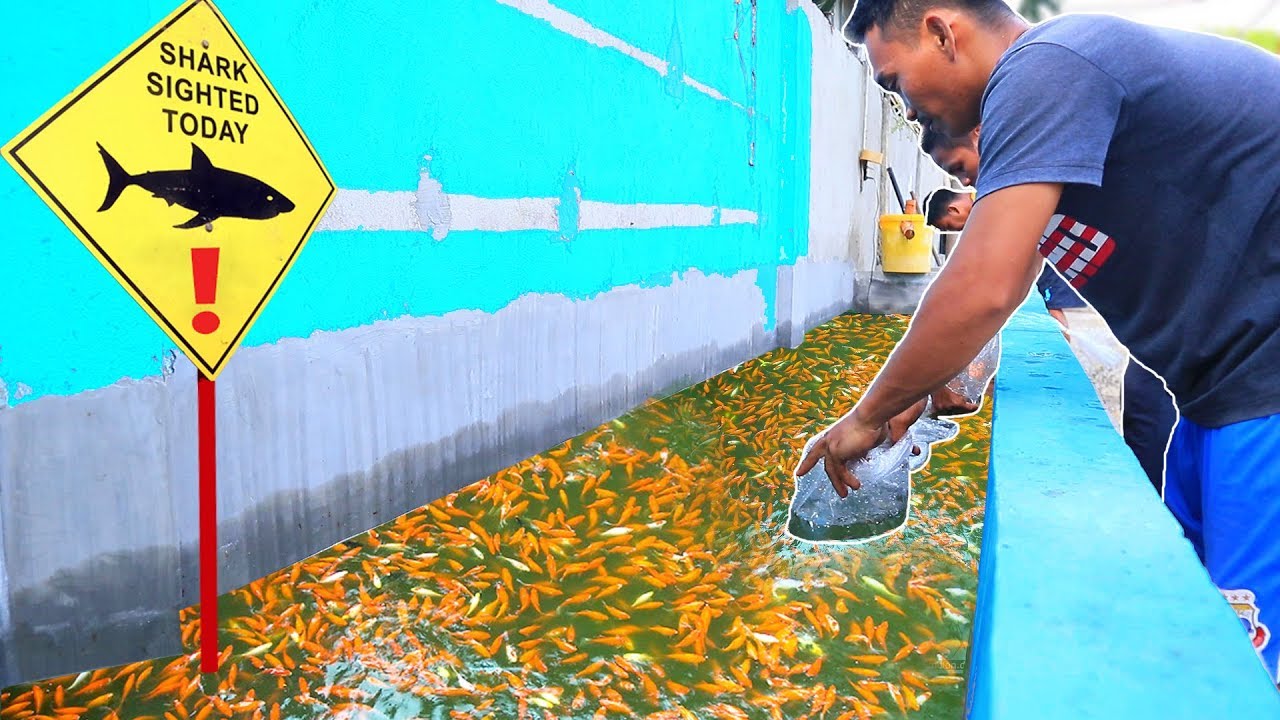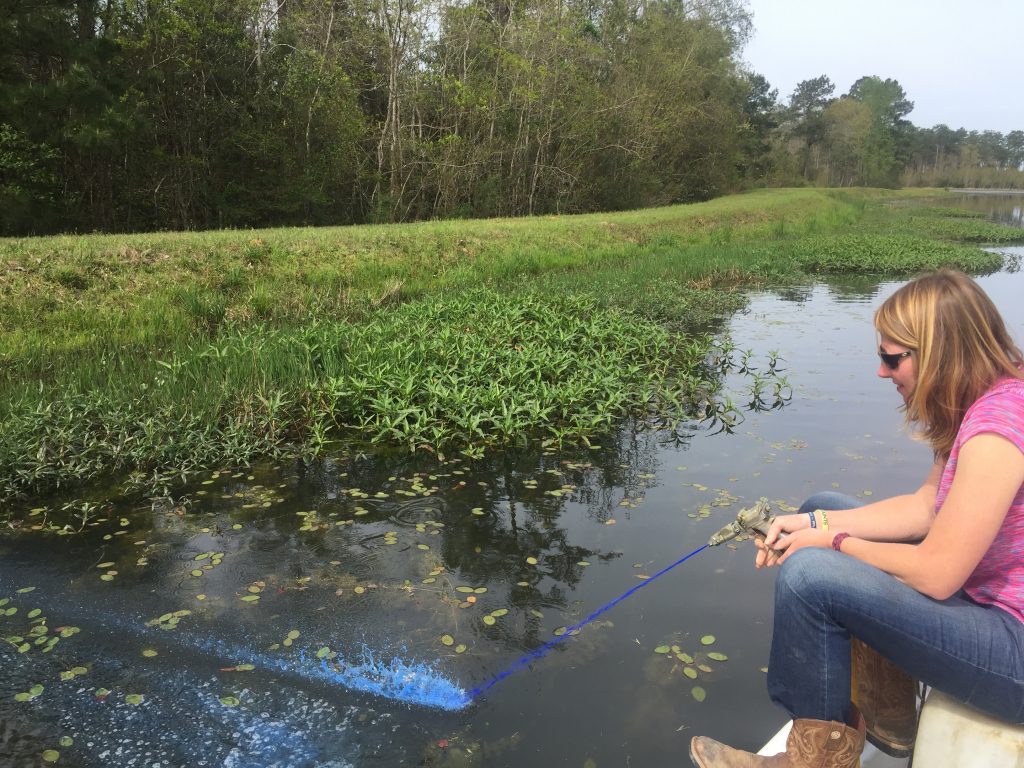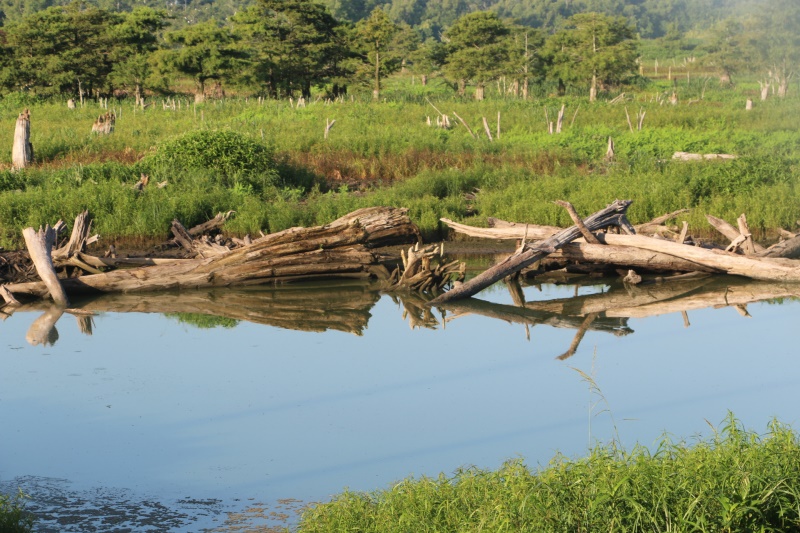Fish Pond Management Techniques Types Of Ponds For Farming
Hey friend, I've got some interesting information to share with you about fish pond management! If you've ever thought about starting your own fish pond or already have one, this guide will help you navigate the world of pond maintenance and ensure your fish stay happy and healthy.
Fish Pond Management Guide for Beginners

Starting off with the basics, this beginner's guide will lay the foundation for understanding fish pond management. Whether you have a small backyard pond or a larger setup, there are some key elements to consider.
First and foremost, you need to ensure the water quality in your pond is suitable for fish. This involves monitoring the pH levels, temperature, and oxygen content. These factors play a crucial role in the overall health of your fish. Regular water testing and maintenance are essential to keep your pond in optimal condition.
Additionally, it's important to consider the size and population of your fish pond. Overcrowding can lead to stress, disease, and poor water quality. Make sure you have the appropriate space and resources to accommodate the number of fish you plan to keep. Remember, fish need room to swim and thrive!
Another key aspect of fish pond management is filtration. Installing a reliable filtration system will help remove debris, excess nutrients, and harmful substances from the water. There are various types of filters available, including mechanical, biological, and chemical options. It's crucial to choose the right filtration system based on the size and needs of your pond.
Now, let's talk about feeding your fish. Providing a balanced diet is essential for their growth and well-being. Different fish species have different dietary requirements, so make sure to research and feed them accordingly. Overfeeding can lead to water pollution and other health problems, so it's important to follow a feeding schedule and monitor their intake.
Maintaining a proper balance of plants in your pond is also an important aspect of fish pond management. Aquatic plants not only enhance the visual appeal of your pond but also provide shade, oxygen, and natural filtration. They also serve as hiding spots and breeding grounds for fish. Make sure to choose plants that are suitable for your climate and pond conditions.
Ensuring Correct Pond Maintenance: One Way to Keep Fish in Good

Keeping your fish pond well-maintained is crucial for the overall health and longevity of your fish. Proper maintenance ensures a clean and hospitable environment for your aquatic friends.
Regular cleaning and removal of debris is essential for the well-being of your pond. Fallen leaves, twigs, and other organic matter can accumulate at the bottom and decompose, which can lead to imbalanced water parameters. Use a pond net or skimmer to remove these unwanted elements from the water surface.
Trimming and pruning aquatic plants is another important task in pond maintenance. Overgrown plants can create an imbalance in the ecosystem and monopolize essential resources like sunlight and nutrients. Regularly trim the plants to maintain a harmonious balance between plants and fish.
Cleaning and maintaining the filtration system is also vital. Filters can get clogged over time, reducing their efficiency. Check and clean the filters regularly to ensure optimal performance. Depending on the type of filter, you may need to replace or clean the filter media periodically.
To maintain the water quality, partial water changes are necessary. This involves removing a portion of the water and replacing it with fresh, dechlorinated water. Regular water changes help dilute accumulated pollutants and maintain the desired parameters for your fish.
Another important consideration in pond maintenance is pest control. Some pests like algae, snails, or mosquitoes can negatively impact your pond. Using natural methods like introducing algae-eating fish, adding beneficial bacteria, or using algaecides can help control these pests without harming your fish or the environment.
Pond Management - American Sport Fish

American Sport Fish has some valuable insights into pond management. Let's dive into some key aspects they highlight.
When it comes to pond management, understanding the biology and behavior of your fish is important. Different fish species have different requirements and preferences. Knowing their habits, feeding patterns, and reproductive behaviors can help you create the ideal environment for them to thrive.
One aspect of pond management that often gets overlooked is predator control. Predatory birds, mammals, or even larger fish can pose a threat to your fish population. Implementing measures like netting, decoys, or even creating shelters for smaller fish can help protect them from predators.
Another crucial factor to consider is water circulation. Stagnant water can lead to poor oxygen levels and promote the growth of algae and other unwanted organisms. Installing aeration systems or fountains can help maintain proper circulation and oxygenation in your pond.
Pond stocking is another important aspect of pond management. Stocking your pond with the right fish species can help maintain a balanced ecosystem. It's important to consider the compatibility of different species, their growth rates, and their impact on water quality when deciding on stocking options.
Additionally, monitoring and controlling nutrient levels is vital in pond management. Excess nutrients can lead to algal blooms and poor water quality. Implementing strategies like proper feeding practices, adding beneficial bacteria, and using natural or mechanical means to remove excess nutrients can help control these issues.
Lastly, it's important to have a long-term management plan for your fish pond. Regular monitoring of water quality, fish health, and overall pond condition is necessary. Being proactive in identifying and addressing any issues can help prevent and mitigate potential problems in the future.
Fish Pond Management and Aquaculture 17

Aquaculture is a fascinating field that explores the farming of fish and other aquatic organisms. Let's take a closer look at some more insights from Fish Pond Management and Aquaculture 17.
One important aspect of aquaculture is selecting the right fish species for your pond. There are different factors to consider, such as market demand, climatic suitability, and compatibility with other species. Research and consult with local experts to determine the best fish species for your specific pond and region.
Proper feeding practices play a significant role in aquaculture. Providing the right nutrition in appropriate quantities is essential for optimal growth and health of your fish. Feeds with balanced nutrients and appropriate protein content are usually recommended. Regular feeding schedules and monitoring of fish appetite are important to prevent overfeeding.
Water quality management is a critical aspect of fish pond management in aquaculture. Maintaining suitable water parameters is crucial for the overall productivity and health of your fish. Factors such as dissolved oxygen levels, pH, temperature, and ammonia levels need to be monitored and regulated. Proper aeration, filtration, and water exchange practices are key to achieving and maintaining optimal water quality.
Disease prevention and management is also vital in aquaculture. Fish can be susceptible to various diseases, parasites, and pathogens. Regular health checks, quarantine practices, vaccination (if available), and maintaining good biosecurity measures can help prevent and control diseases in your fish pond.
Furthermore, it's important to consider the economic aspects of aquaculture. Proper financial planning, market analysis, and keeping track of production costs and potential revenue are necessary for running a successful fish farm. Understanding the market demand and trends can help you make informed decisions about production and marketing strategies.
Waterfalls: The Soothing Sights and Sounds of Running Water - quinju.com

Water features like waterfalls can significantly enhance the visual appeal and tranquility of your fish pond. Let's explore some benefits of incorporating waterfalls from quinju.com.
The sound of running water creates a soothing and calming atmosphere. It helps mask unwanted noises, thereby creating a peaceful environment for you and your fish to enjoy.
Waterfalls also provide aeration and oxygenation to the pond, as the splashing water increases the dissolved oxygen levels. Adequate oxygenation is crucial for the health and well-being of your fish.
The movement and flow of water created by waterfalls can help prevent stagnation and maintain water circulation. This can reduce the chances of algae growth and improve the overall water quality.
Waterfalls can serve as a natural filtration system. As water cascades down the rocks, it gets filtered, removing debris and floating particles. This can help reduce the load on your mechanical filtration system.
The aesthetic appeal of waterfalls adds a touch of natural beauty to your pond. The sight of water cascading down rocks creates a visually stunning focal point, enhancing the overall ambiance of your outdoor space.
Fish Pond Design and Construction - Agro 4 Africa
Designing and constructing your fish pond requires careful planning and consideration. Agro 4 Africa sheds light on some important aspects of fish pond design and construction.
Firstly, selecting the right location is crucial. The site should have proper access to sunlight and be away from excessive shade, trees, or other obstructions. It's also important to ensure the soil is suitable for pond construction and is not prone to erosion.
Determining the size and shape of your pond depends on various factors such as available space, the number of fish, and the purpose of the pond. Rectangular or oval-shaped ponds are commonly used as they provide more surface area for a given perimeter. Make sure to design the pond with efficient use of space and easy access for maintenance.
The depth of your fish pond is another important consideration. It should be deep enough to have a stable water temperature throughout the year, especially in colder climates. A depth of around 3 to 6 feet is generally recommended.
To prevent seepage, it's essential to properly prepare the pond bottom and sides. Compacting the soil, adding an impermeable layer (such as bentonite clay), and installing liners (such as HDPE or PVC) can help prevent water from seeping out. Ensuring proper water retention is crucial for maintaining the desired water level and reducing the loss of water.
The construction of inlets and outlets is important for effective water circulation and management. Inlets allow fresh water to enter the pond, while outlets help control the water level and remove excess water. It's important to design and install these structures carefully to avoid water imbalance or flooding.
Lastly, landscaping the surroundings of your fish pond can enhance its visual appeal and blend it harmoniously with the natural landscape. Planting trees, shrubs, and grasses can provide shade, prevent erosion, and create a more aesthetically pleasing environment.
Fish Pond Management - YouTube

YouTube is a great resource for visual learners, and there are countless videos available on fish pond management. Here are a few popular channels to check out:
1. Worldwide Aquaculture - This channel provides a wide range of informative videos on fish farming, aquaculture techniques, and pond management.
2. Pond Britain - If you're specifically interested in British pond management, this channel offers insights, tips, and DIY guides for maintaining and enhancing your pond.
3. The Pond Digger - This channel focuses on pond construction and design, offering step-by-step guides and expert advice on creating and managing beautiful ponds.
4. Koi Keepers - If you have a Koi pond or are considering keeping Koi in your fish pond, this channel provides valuable information on Koi care, feeding, and pond maintenance.
These YouTube channels offer a visual learning experience, making it easier to grasp various techniques and concepts related to fish pond management. They can serve as a great complement to the information provided in this guide.
Fish Management Strategies for Ponds
When it comes to managing fish ponds, adopting effective strategies is essential. Let's dive into some fish management strategies for ponds.
Stocking appropriate fish species is crucial for successful fish pond management. Native fish species that are well-suited to the local climate and water conditions often fare better. These species are more likely to thrive and maintain a balanced ecosystem.
Feeding practices play a significant role in fish management. Providing a balanced and nutritious diet is essential for the growth and overall health of your fish. Overfeeding can lead to poor water quality and a variety of health issues. Follow a feeding schedule and ensure you're providing the right amount of food for your fish population.
Implementing fish population control measures can help maintain a healthy fish pond. Overpopulation can lead to competition for resources, poor growth rates, and increased disease risk. Regularly monitor the population and consider selective harvesting or introducing natural predators to control fish numbers.
Regular monitoring of water quality parameters is crucial for successful fish pond management. Water tests for pH levels, ammonia, nitrate, and dissolved oxygen should be performed regularly to ensure the water is within suitable ranges. Making adjustments as needed and addressing any imbalances promptly will help maintain a healthy aquatic environment.
Implementing a proper maintenance regimen is key to preventing problems and ensuring the long-term success of your fish pond. Regular cleaning
If you are searching about A All Animal Control Fish pond Stocking Management you've came to the right place. We have 30 Pictures about A All Animal Control Fish pond Stocking Management like Fish Pond Management Techniques (Subtitles) | मछली पालन में तालाब का, +155 Backyard Fishpond Philippines | Home Decor and also Ensuring Correct Pond Maintenance: One way to keep Fish in Good. Read more:
A All Animal Control Fish Pond Stocking Management
 aallanimalcontrol.com
aallanimalcontrol.com fish pond management stocking inhabitants herons predators raccoons storks arrive commonly feed such they when
Fish Pond Management - YouTube
 www.youtube.com
www.youtube.com Techniques Of Fishpond Management. | Farming Guide, Fish Farming, Farm Pond
 www.pinterest.com
www.pinterest.com fishpond iiif
Fish Pond Management Guide For Beginners
 www.theveterinarysite.com
www.theveterinarysite.com Fish Pond Management And Aquaculture 17
 www.slideshare.net
www.slideshare.net aquaculture
Fish Pond Management - Clemson University
 calendar.clemson.edu
calendar.clemson.edu pond management fish
Recreational Fish Pond Management - YouTube
 www.youtube.com
www.youtube.com Ensuring Correct Pond Maintenance: One Way To Keep Fish In Good
 dexters.world
dexters.world fish pond correct ensuring maintenance condition keep way good
Fish Pond Management Techniques (Subtitles) | मछली पालन में तालाब का
 www.pinterest.com
www.pinterest.com The Most Important Principles Of Pond Management - American Sport Fish
 americansportfish.com
americansportfish.com principles crucial matters
Pond Management - American Sport Fish
 americansportfish.com
americansportfish.com Pond Management Techniques 2014 - UF/IFAS Extension Gadsden County
 blogs.ifas.ufl.edu
blogs.ifas.ufl.edu pond techniques management ifas gadsden county ufl blogs edu
Fish Pond Management And Aquaculture 17
 www.slideshare.net
www.slideshare.net aquaculture
7 Steps For Maintaining A Clean Pond – Castle Aquatics
 castleaquatics.com
castleaquatics.com maintaining
Waterfalls : The Soothing Sights And Sounds Of Running Water - Quinju.com
 www.quinju.com
www.quinju.com pond soothing fish quinju waterfalls sounds sights running water netting protect becoming catch way only
Fish Pond Contractor|Builder|Watergarden Installer|Central FL
 www.tropicalwatergardens.com
www.tropicalwatergardens.com pond ecosystem ponds fish backyard filtration water waterfalls ny koi elements healthy rochester construction acorn garden natural aquascape beautiful filters
Fish Sampling For Proper Pond Management | Pond Management
fish sampling pond management water quality seining
Pond Management | Maryland Sea Grant | Pond Water Features, Pond
 www.pinterest.com
www.pinterest.com pond management water ponds stormwater nutrients maryland drawing features drawings draw showing organic matter suburban development choose board methods testing
Chapter 2 Setting The Fish Pond System To Flow - YouTube
 www.youtube.com
www.youtube.com Types Of Fish Ponds For Fish Farming - A Full Guide | Agri Farming
 www.agrifarming.in
www.agrifarming.in ponds agrifarming
Fish Pond Design And Construction – Agro 4 Africa
fish pond construction farming africa construct min read
+155 Backyard Fishpond Philippines | Home Decor
 expohomedecor.blogspot.com
expohomedecor.blogspot.com pond fish fishpond philippines management backyard need know via
Fish Pond Setup Guide; Suitable Pond Fish Species | Agri Farming
 www.agrifarming.in
www.agrifarming.in agrifarming
Trophy Fisheries - Pond Services, Pond Management, Fish
 trophyfisheries.com
trophyfisheries.com Pond Liming - American Sport Fish
 americansportfish.com
americansportfish.com liming pond fish
Pond-Myths-Debunked-Infographic.png | Pond, Pond Maintenance, Fish Care
 www.pinterest.com
www.pinterest.com allpondsolutions pond
Work Progresses On The Fish Pond – The Fish Pond
 thefishpond2004.wordpress.com
thefishpond2004.wordpress.com pond progresses
Fish Management Strategies For Ponds
ponds lambert christopher
Fish Pond Management - Clemson University
 calendar.clemson.edu
calendar.clemson.edu clemson pond
Fish Pond Management And Aquaculture 17
 www.slideshare.net
www.slideshare.net aquaculture
Pond liming. Fish sampling for proper pond management. Fish pond management and aquaculture 17
Post a Comment for "Fish Pond Management Techniques Types Of Ponds For Farming"